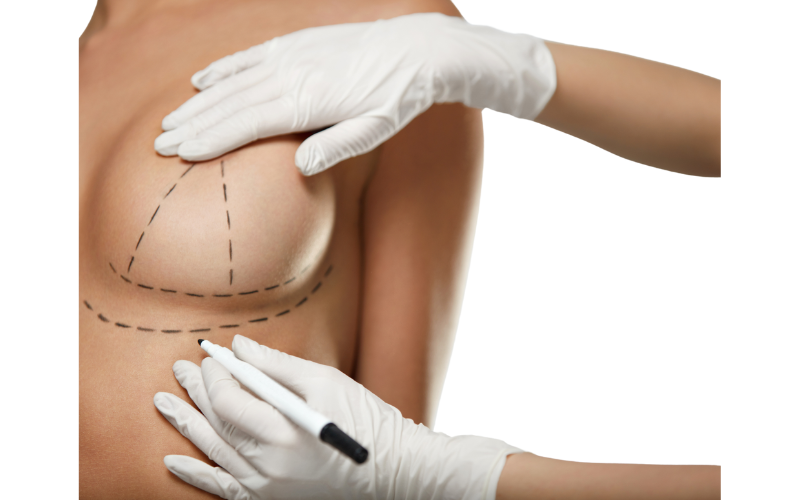Breast lift surgery, or mastopexy, restores a more youthful appearance to a woman’s breasts. Over the years breasts can lose their shape and firmness due to pregnancy, nursing and loss of skin elasticity, causing them to sag. Mastopexy will raise and reshape breasts—slowing the effects of aging and gravity. This procedure can reduce the size of the areola, the darker skin surrounding the nipple. NuVista Plastic Surgery of Salt Lake City, Utah can answer all of your questions concerning breast lifts.
Breast lifts are commonly performed in conjunction with breast augmentation (implants) to increase breast firmness and size. This may appeal to women who have lost breast volume after pregnancy. Pregnancy and nursing often result in stretched skin and therefore decreased volume. If you are planning a future pregnancy, it is advisable to postpone your breast lift as pregnancy will likely cause further stretching.
As with all plastic surgery, realistic expectations and emotional stability are important. Though breasts of any size can be lifted, women with smaller breasts enjoy longer lasting results.
Filter
Treatment for Capsular Contracture
Read MoreThe Secret Scar Breast Augmentation
Read More
The Procedure
Though not a simple operation, mastopexy is normally safe when performed by a qualified plastic surgeon. Breast lifts are occasionally performed in a hospital, but more often is done in an outpatient facility. Breast lifts are usually performed under general anesthesia. Local anesthesia may be used with a sedative if the incision is small; you’ll be awake but relaxed, and will feel minimal discomfort.
The surgery may take between 1 1/2 to 3 1/2 hours at our office. A more common approach involves an incision along the natural contour of the breast where excess skin will be removed. The nipple and areola are then repositioned. The skin surrounding the areola is brought together to reshape the breast, with stitches around the areola and the lower breast area.
Anesthesia
Local anesthesia with sedation or general anesthesia.
Procedure Time
Approximately 1 hour.
Length of Stay
Home the same day once patient has adequately recovered from anesthesia.
Discomfort
Depending upon incision and placement of implant pain may be mild to moderate controlled with prescription pain medications.
Recovery
Anywhere between three and four days. However, most of our patients take a week off of their main activities.
What to Expect After Surgery
After surgery, your stitches will be covered with gauze and an elastic bandage or a surgical bra will hold the breasts in place. Your breasts will be bruised, swollen, and you may experience some mild discomfort for a couple of days. Your doctor may prescribe pain medication. A soft support bra replaces the bandages or surgical bra after a few days. In the recovery stage, it is important to wear the bra at all times.
After a week or two, the stitches will be removed. Some noticeable, permanent scarring is normal, but easily covered by your bra or bathing suit. The scars may be red and lumpy for a few months, eventually fading and becoming less obvious. The procedure can also leave you with unevenly positioned nipples, or a permanent loss of feeling in your nipples or breasts.
To ensure proper healing, plan to stay at home for at least a week before returning to work. You will need to avoid lifting anything over your head for 3-4 weeks and avoid strenuous sports for a month.
Delayed wound healing
More likely in individuals with diabetes, history of radiation, autoimmune diseases, or smokers. Stop smoking before surgery to reduce this risk.
Capsular contracture
The formation of scar tissue around the implant, leading to firmness or distortion of the breast shape. Proper implant placement and following post-operative care instructions can help minimize this risk.
Bleeding
Excessive bleeding during or after surgery can occur. To reduce this risk, follow all pre-operative instructions, including avoiding certain medications that can increase bleeding.
Infection
Although rare, infections can occur. To lower this risk, ensure proper hygiene and follow post-operative care instructions meticulously.
Skin irregularities
Sometimes the skin may not heal evenly or may develop irregularities. This risk can be reduced by selecting a skilled and experienced surgeon and following all post-operative care instructions.
Implant rupture or leakage
While rare, this can happen. Choose implants with a good track record for durability and follow all guidelines for post-operative care and regular check-ups.

